Rob Pinkney by Florian Hafner
The “Sound Shoeing Protocol “was developed by Rob Pinkney to find a consistent, repeatable way to develop and ensure sound feet.
According to Rob, the main problem in foot-related un-soundness is the lack of foot mass. “To manage hoof angles and lever arms (breakover), feet are often over-trimmed and therefore lack the mass and depth to protect inner structures and enable comfortable movement. Most feet that I see that are considered as having a too long toe are in fact too short at the centre of the hoof and sometimes at the heels. The challenge is to manage the foot in a way that makes it develop a lot of mass AND orientate the growth more downward instead of forward. If this idea is applied successfully we help to develop feet with enough foot depth but without forward migrated toes and heels. The four points of the 'Sound Shoeing Protocol' are a way to achieve this ideal. It is important to understand that the feet need a certain time to change.
Usually, we talk about three to four shoeings. We can`t bring the foot back without having enough foot, so we first have to ensure the development of enough foot and then we can start to control the forward migration effectively. Unfortunately, it is commonly done the other way round: cutting the toe off of feet that already lack foot depth. The guideline is to 'grow problems out of the hoof, not cut them out'”.
The “Sound Shoeing Protocol” consists of 4 principles:
• Proportion
• Shape
• Placement
• Balance
Proportion:
Proportion refers to foot size in relation to the size of the horse. A golden means divider (www.kowhaiforge.co.nz) is used to measure the hoof. Any other tools which enable you to consistently measure linear distances from point to point on a three-dimensional object are fine as well. The ideal proportions are achieved when the frog length is 1.61803399 times longer than the distance from tip of the frog to the toe (Fig. 1a and c).
The longer side of the divider (= frog length) shows as well the minimum vertical height of the foot (Fig. 1 b and d). In some cases, the frog can be misleading, for example when it is “stretched” on feet with a negative palmar angle. A reliable control measurement is the distance from the top of the coronet to the bottom of the fetlock (Fig. 1 e and f). If the frog's length is the same as this distance, then the measurement is reliable. If it isn't, then rely rather on the coronet-fetlock measurement to establish the correct vertical hoof height. If you have the callipers set to the coronet-fetlock distance, they will also give you the fetlock-to-carpus distance, as the latter is twice the coronet-to-fetlock measurement. If you find that hoof is “missing”, don’t trim. Just shape the hoof (see the next principle, “Shape”). Let the foot grow until the correct pro- portions have developed. This may mean to just pulling the shoes, shaping the foot without shortening it, shaping and placing the shoe according to the protocol, and nailing the shoe on for the first shoeing. Important: The waxy layer of the sole is no indication of how much to trim in this protocol.
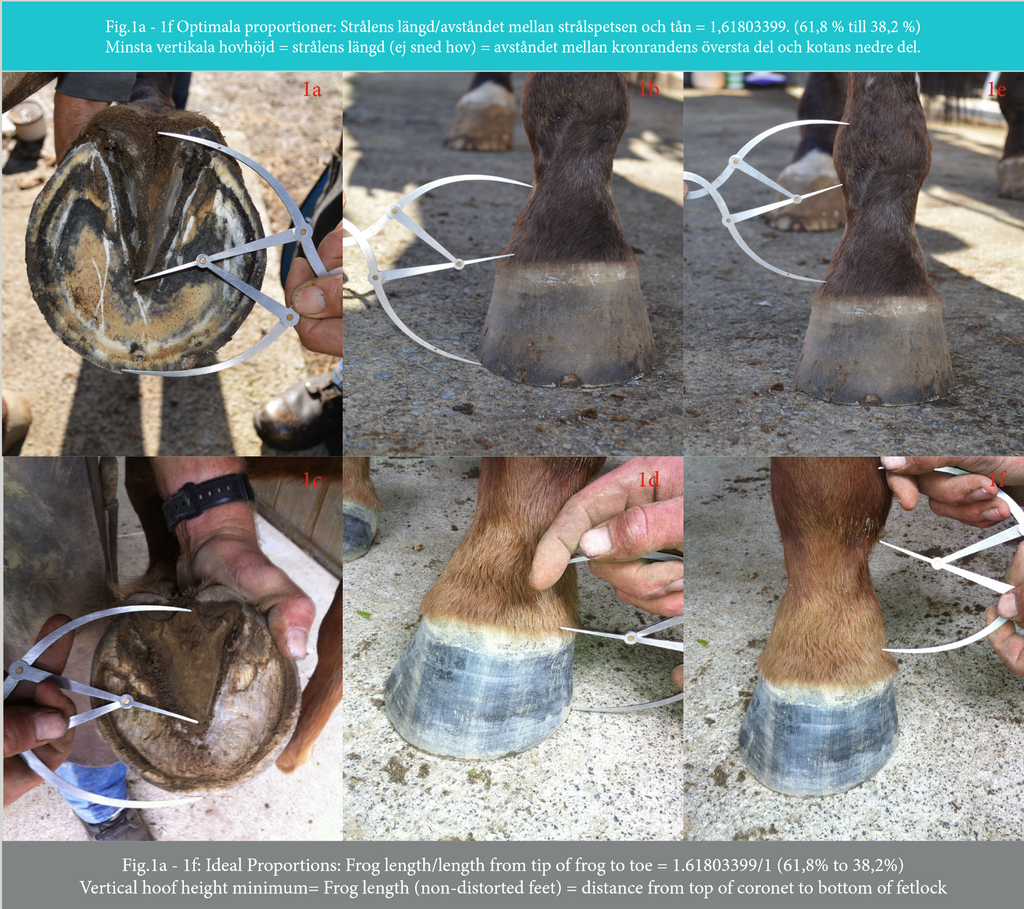
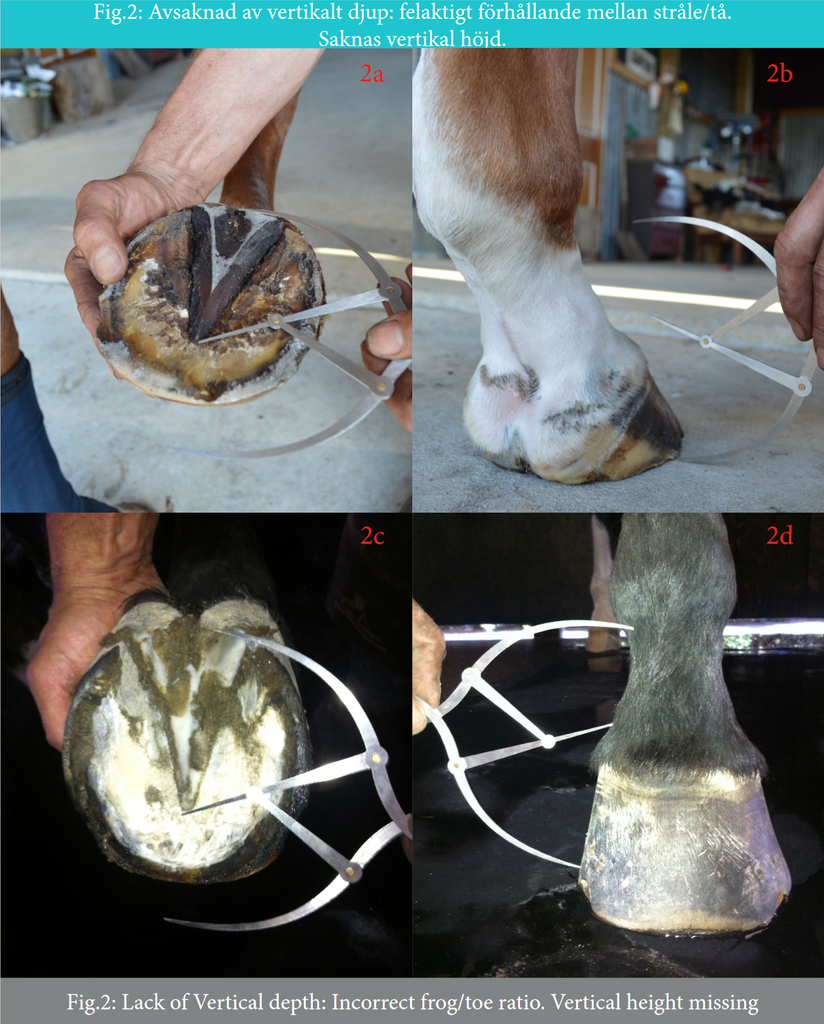
Shape:
Shape means to protect and/or to develop a horn capsule that mimics the shape of the coffin bone. Even when some variations in coffin bones can be found, the coffin bone can be described as a “Three Parameter Ellipse” ** with a difference between the lateral and medial aspect (Fig. 3 a and c).
To recognise the “true foot shape” we use the shape of the undistorted white line, the “under coronet shape”, and the imagined distal border of the coffin bone projected to the sole.
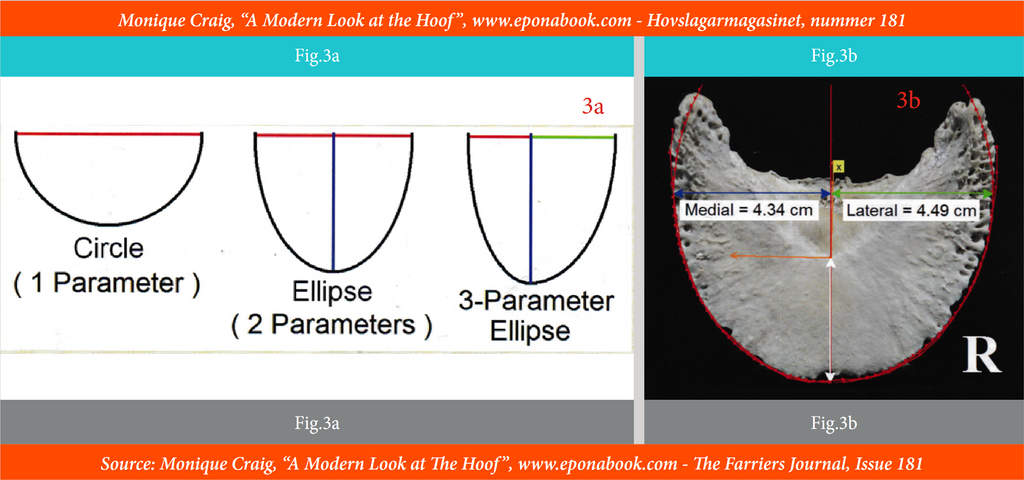
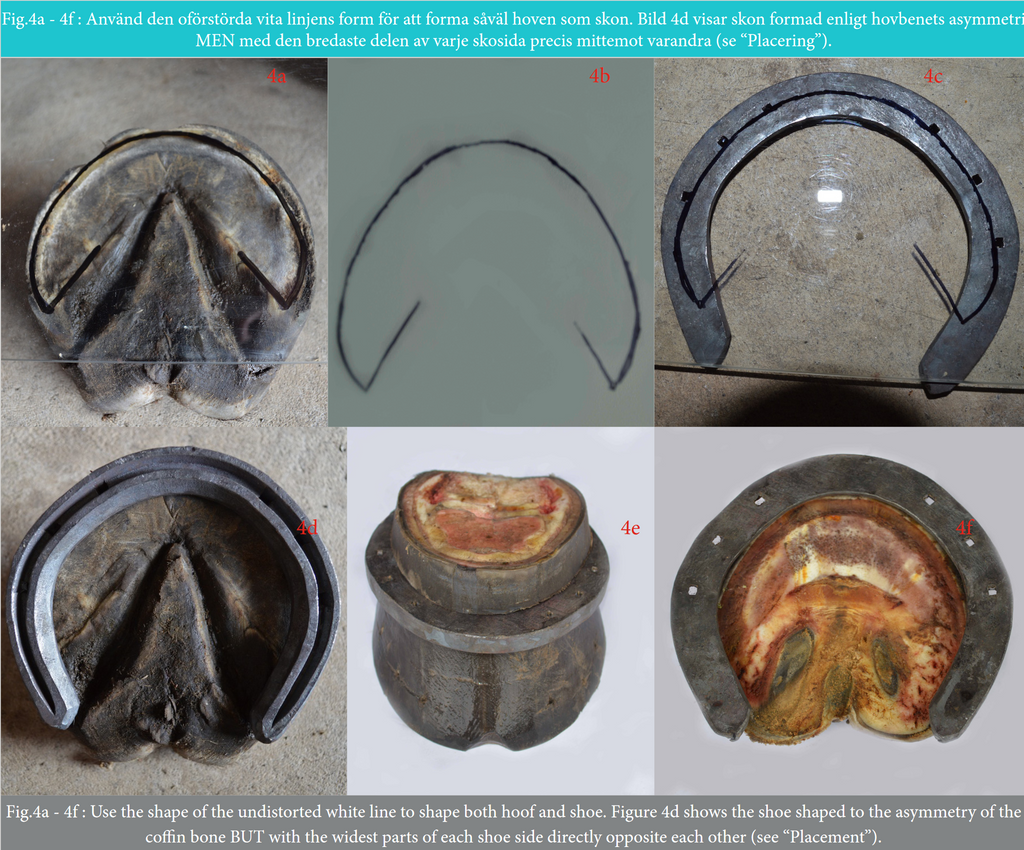
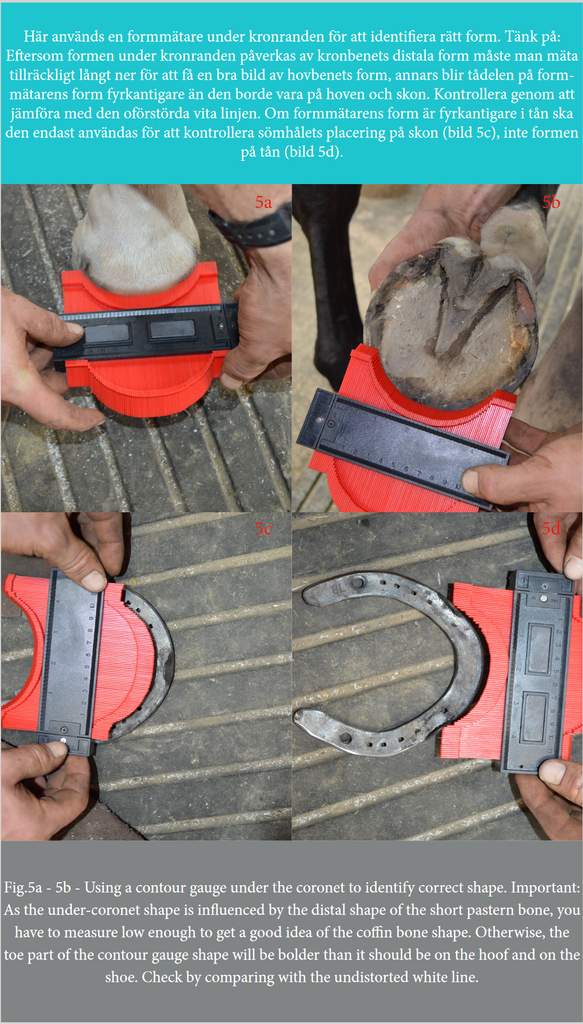
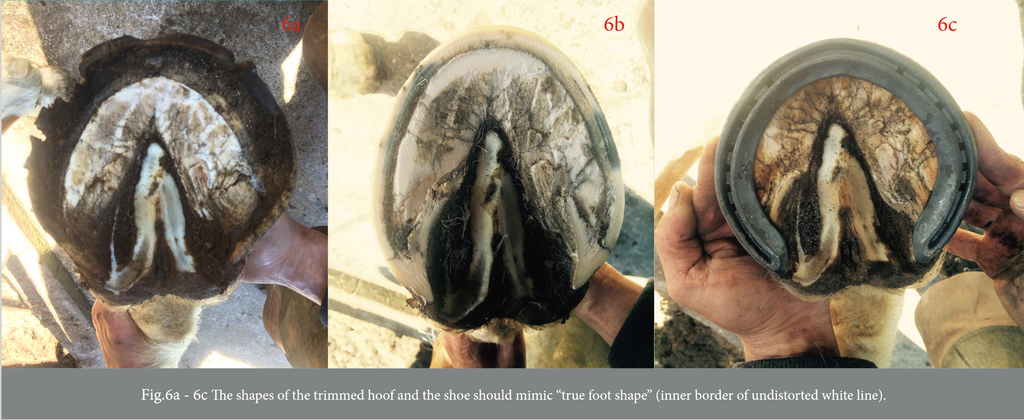
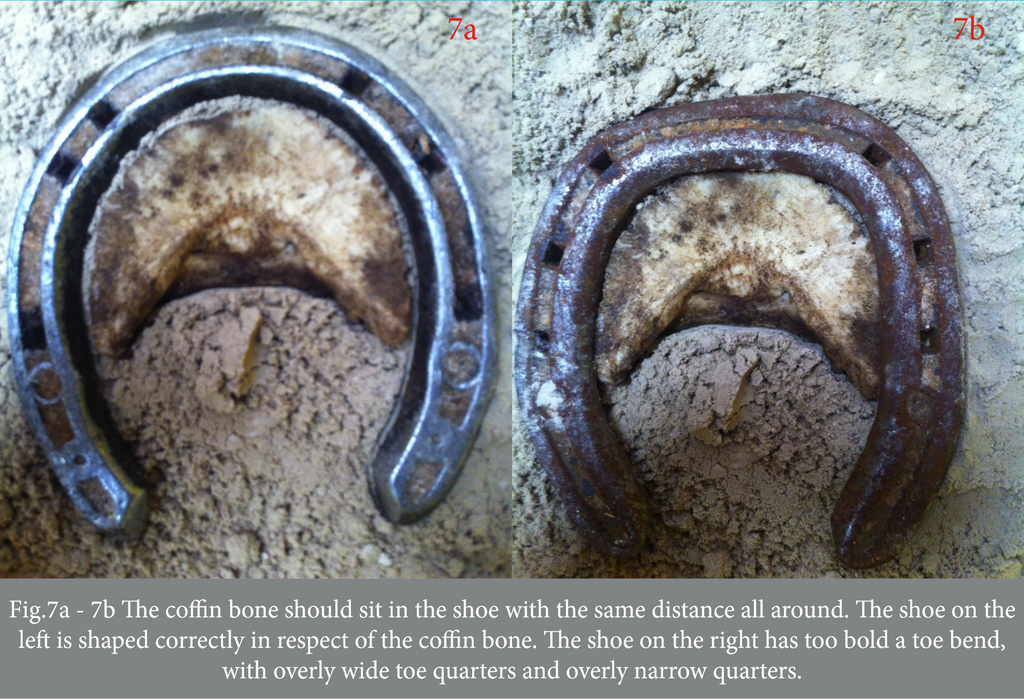
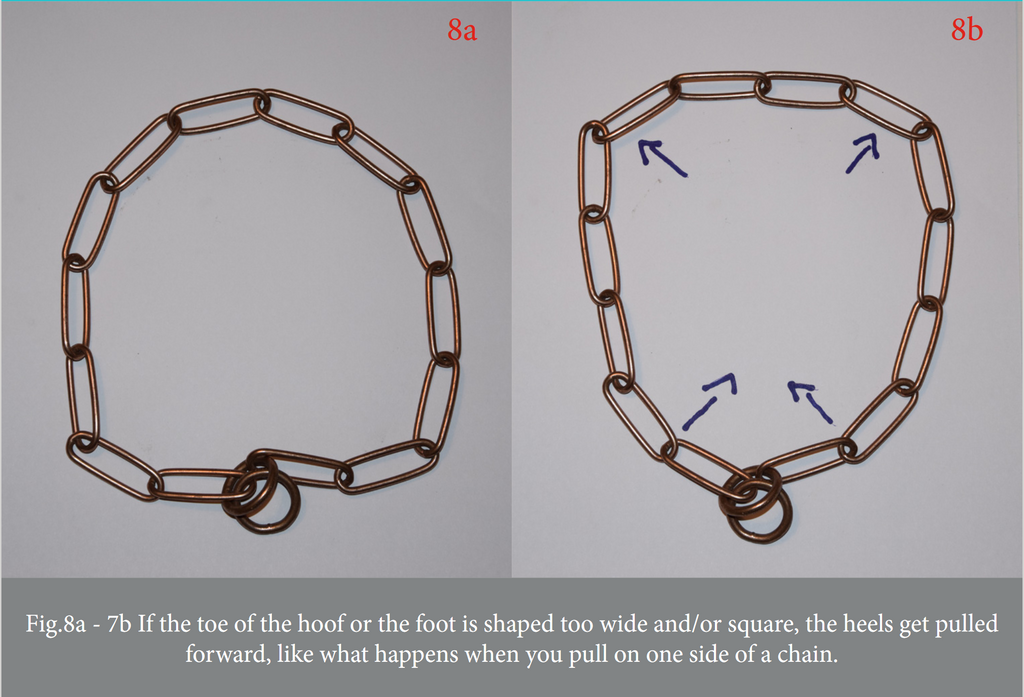
Placement describes having the shoe fit equally around the coffin bone. The toe quarters and heel quarters should be at same length. The widest parts on each side of the foot should be directly opposite each other. The widest part should be halfway between the toe and heel quarters. In distorted feet, this can lead to a shoe sitting a bit “wide” at the quarters (widest part) until the correct shape develops. (However, shoes are never fit too wide at any part to pre-
vent shoe loss and hoof damage).
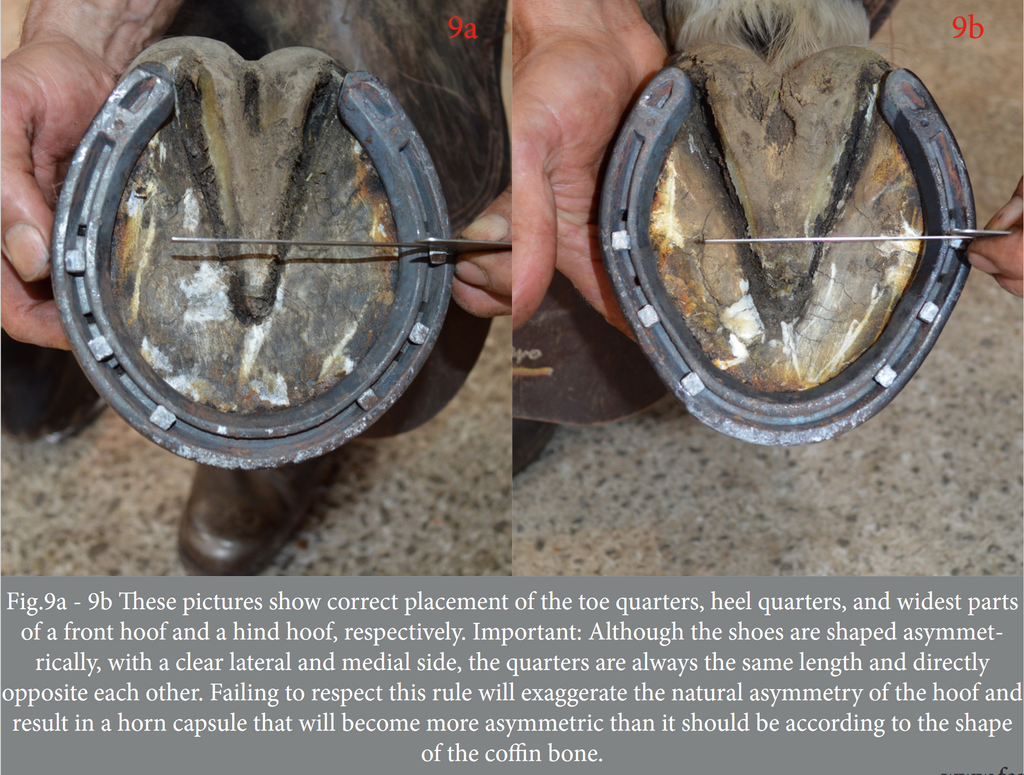
Balance:
Whereas the first three points of the protocol are crucial, balance is more open for discussion. Rob knows people who use a different way to assess medio-lateral balance than he does but stick to the other three points and still get the desired results.
Rob uses a T-square to assess medio-lateral balance on the front feet. The T-square is more of a training aid, as are the golden means dividers. They both help to develop good visual judgement.
On the hind feet, he assesses the horse standing on even ground. Here the hoof wall height at the quarters should be even and the coronet should be parallel to the ground.
As already mentioned, there are other ways and opinions on how to assess medio-lateral balance correctly that work absolutely fine if the principles of proportions, shape, and placement are respected.
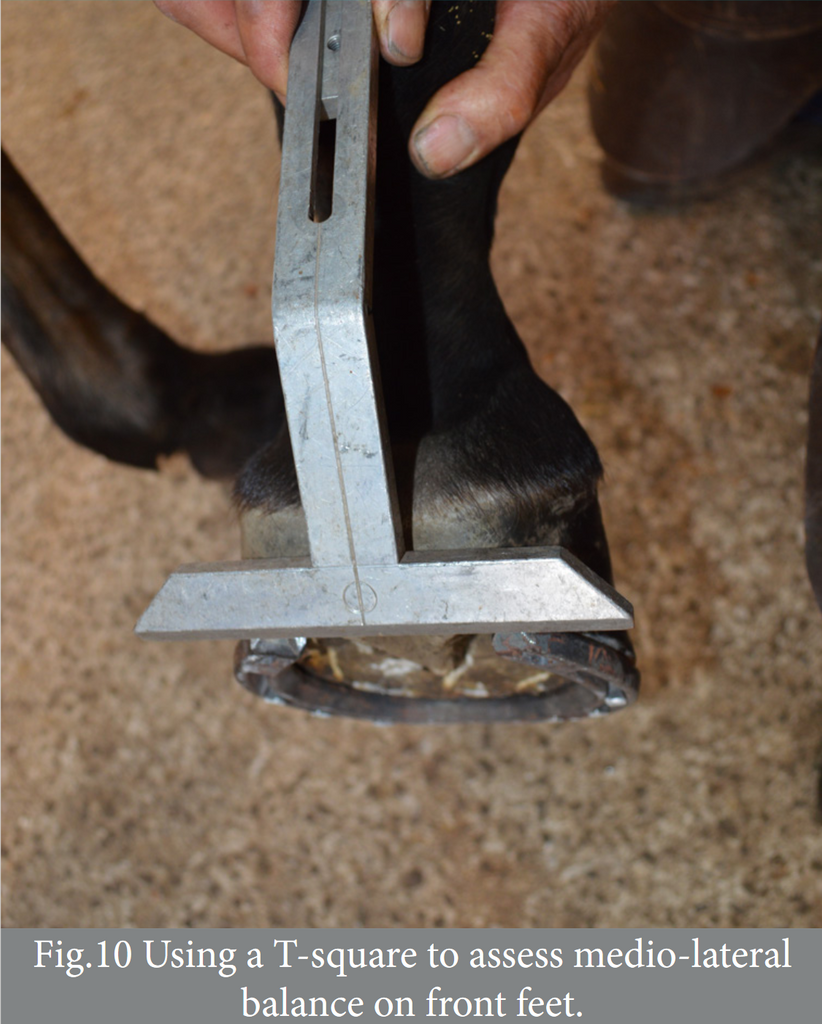
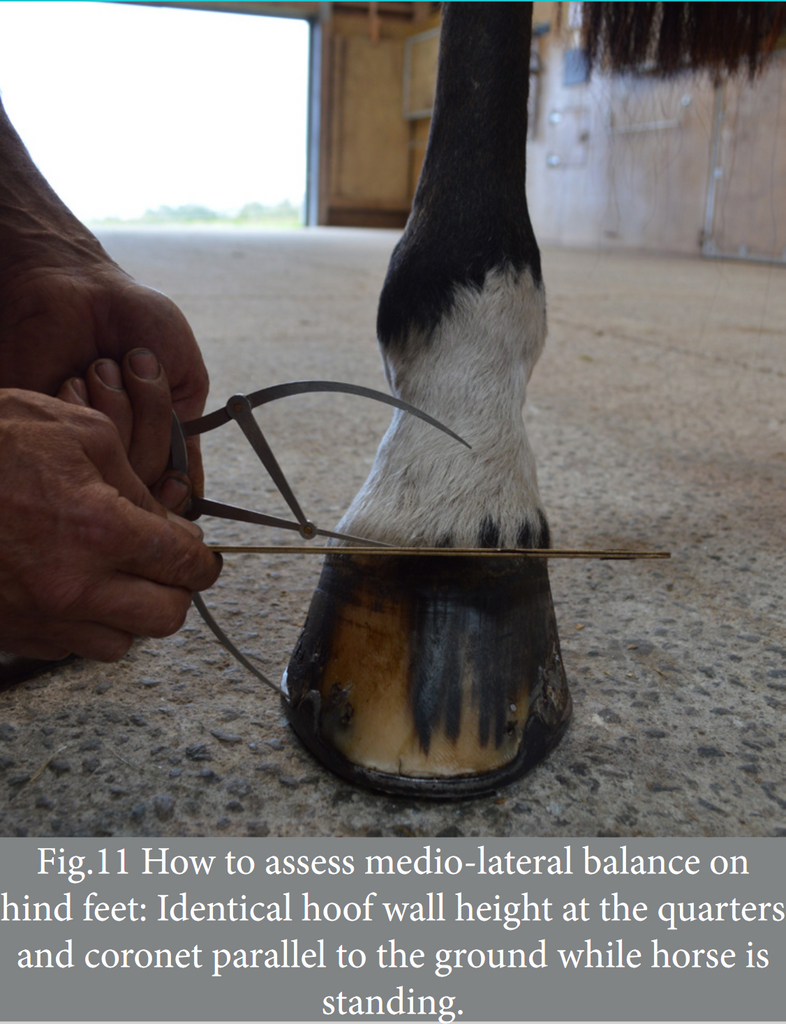
Rob`s advice for starting to work with the Sound Shoeing Protocol:” It is important to give the feet time to change to achieve the desired effect. Here, communicating with owners, trainers, and vets is crucial. They have to be informed that they have to be patient for about three to four shoeings before the feet will show the correct proportions. Until that happens they might look just long and out of shape at some moments. But you need enough foot first before you can start to shape them. If the desired result is achieved, you should be able to pull shoes any time in the shoeing cycle and have the horse walk barefoot on every type of ground without noting any discomfort. If a horse is not sound barefoot it will also not be completely sound with shoes!”
For more information see www.kowhaiforge.co.nz or google “Sound Shoeing Protocol Rob Pinkney Prezi”.





